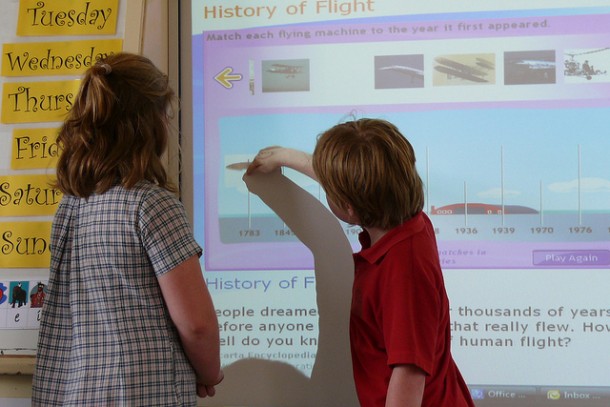GLOBAL. Writing lesson plans is one of a teacher’s most important responsibilities. Having a good lesson plan makes the teacher’s job easier and allows students to learn as much as possible while enjoying the material. If you are not quite sure about how to start lesson planning, read these valuable tips for writing lesson plans before you start.
1. Have A Clear Objective & Write It Down

“When writing ESL lesson plans it is really important to have a clear objective.” | shawncampbell.
When writing ESL lesson plans it is really important to have a clear objective. This should not be something vague like “students will learn the present simple tense” but rather something very specific, such as “students will be able to talk about their likes and dislikes using the present simple tense and new vocabulary words”.
Always write down the lesson’s objective and, at the very least, a solid outline of the rest of the lesson plan. Having a good lesson plan written down allows the teacher to refer to it and make notes and adjustments throughout the class.
2. Plan An Introduction & Icebreaker
You may see your students every day, but each lesson you plan should include an introduction and short icebreaker activity. This can be as simple as posing a question for conversation, talking about a visual such as a picture, or a quick review of the last class’s material. The introduction and icebreaker should not take more than 10% of the total lesson time.
2. Make Lessons Fun, Visual & Interactive

“Adding visual and interactive elements to your lesson plans is a great way to raise the fun factor, as well as increase the likelihood that your students will remember the content.” | pablog61.
Students learn more when they are interested and motivated and a main idea behind good lesson plans should be creating lessons that students find fun. Adding visual and interactive elements to your lesson plans is a great way to raise the fun factor, as well as increase the likelihood that your students will remember the content. It is proven that both visuals and interactive activities greatly increase the information a student can remember.
3. Always Have An Educational Focus
Sometimes teachers get so caught up in making fun lessons that they forget about their objectives and the need for educational lesson plans. Every lesson a teacher gives should include an educational focus. For example, if you want your students to work on listening and provide a fun Disney movie as your content, you should ask yourself if watching the entire film, instead of only a clip, adds anything educational to the lesson.
4. Try To Incorporate The 4 Skills
The 4 English Skills Are:
- Reading
- Writing
- Listening
- Speaking
All good lesson plans should touch upon each of these four skills, as well as others such as pronunciation and grammar. Each individual lesson will likely focus on only one or two of these points, but a well rounded lesson will somehow incorporate all 4 of the English skills.
5. Be Realistic About Time Constraints

“Be realistic about time constraints.” | anycolouryoulike.
When writing lesson plans it is easy to plan a stellar lesson that includes reading, writing, listening, and speaking, but teachers need to be aware of their time constraints and the abilities of their students. Teachers should have very realistic expectations about what their students can achieve in the given time. If you are not sure, consider the next point, having multiple lesson plans.
6. Consider Multiple Lesson Plans
Having different versions of the same lesson plan can be a great way to be prepared for anything. A good idea is to have your ideal lesson plan, a shorter version in case of confusion or an unforeseen time restraint, and a longer version on the chance that you underestimated your students or had more time than expected.
7. Plan Extension Activities
Every lesson plan should include extension activities for both early finishers and students who would like to practice more at home. Never allow a student to finish and just sit there– they will become bored and often disruptive. Some students also look to continue learning at home with additional activities, exercises, or reading and television recommendations. You should always have a few things included in your lesson plan to recommend for further study.
8. Check Often For Comprehension
Students are often shy and easily embarrassed when learning a new language. Many students do not ask for help or repetition for fear of ridicule. Teachers must check for comprehension various times throughout a lesson. Comprehension checks should never simply ask if the students have understood, rather they must solicit the targeted information from the students.
- Bad Comprehension Check: “Does everybody understand?”
- Good Comprehension Check: “Okay, who can tell me about their family using the descriptive adjectives?”
10. Leave Time To Review At The End
Many teachers forget how important it is to leave time at the end of a lesson for a quick review of the new material and an opportunity for any questions. It often seems that students have understood the concepts but a well planned review session at the end of a lesson may show otherwise. Using the feedback and questions from the review, teachers can plan a better follow up lesson.
Following these 10 tips for lesson planning will ensure quality ESL lessons and a great experience for your students. Writing lesson plans can seems daunting at first, but with a little bit of organization and effort good lesson plans will start to seem easy!

